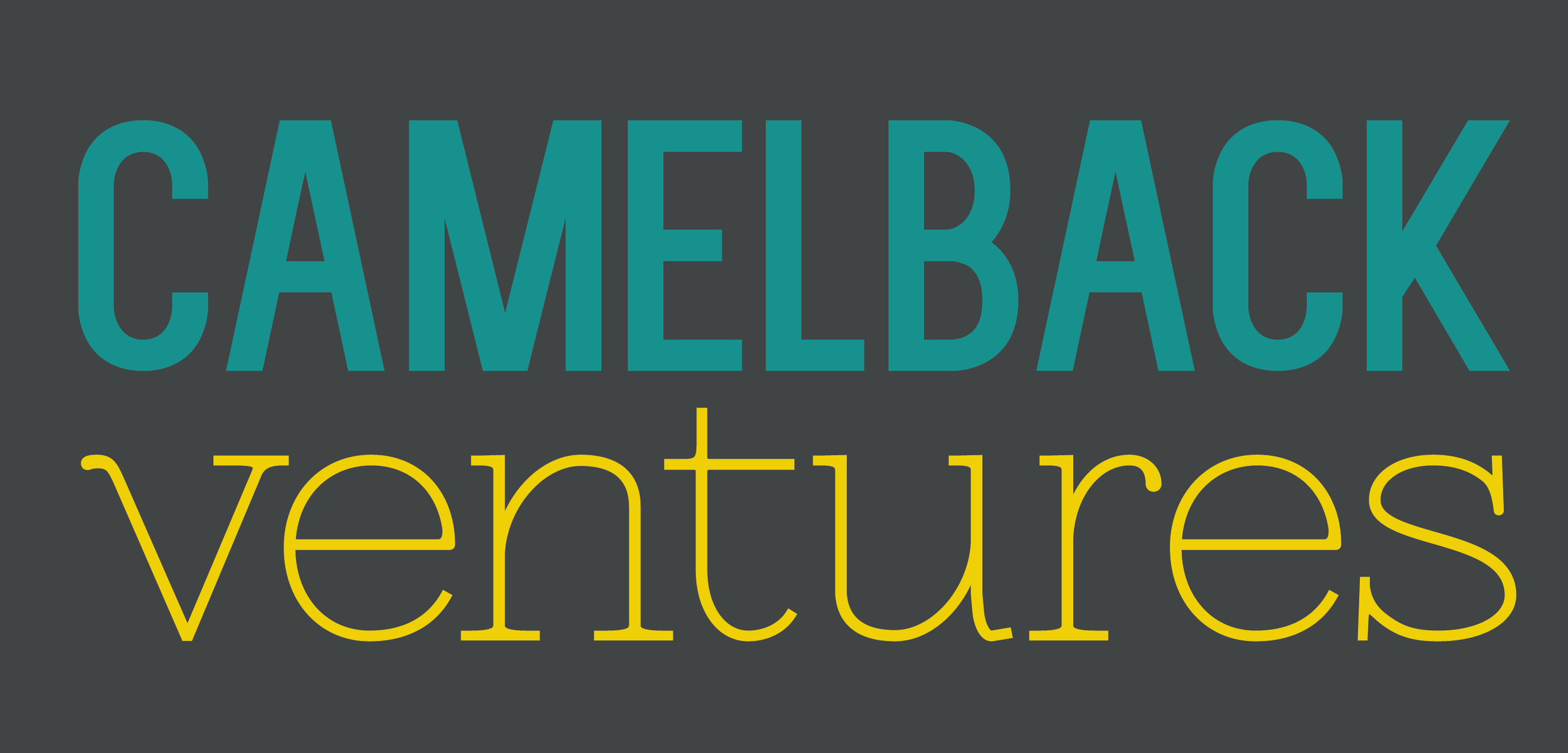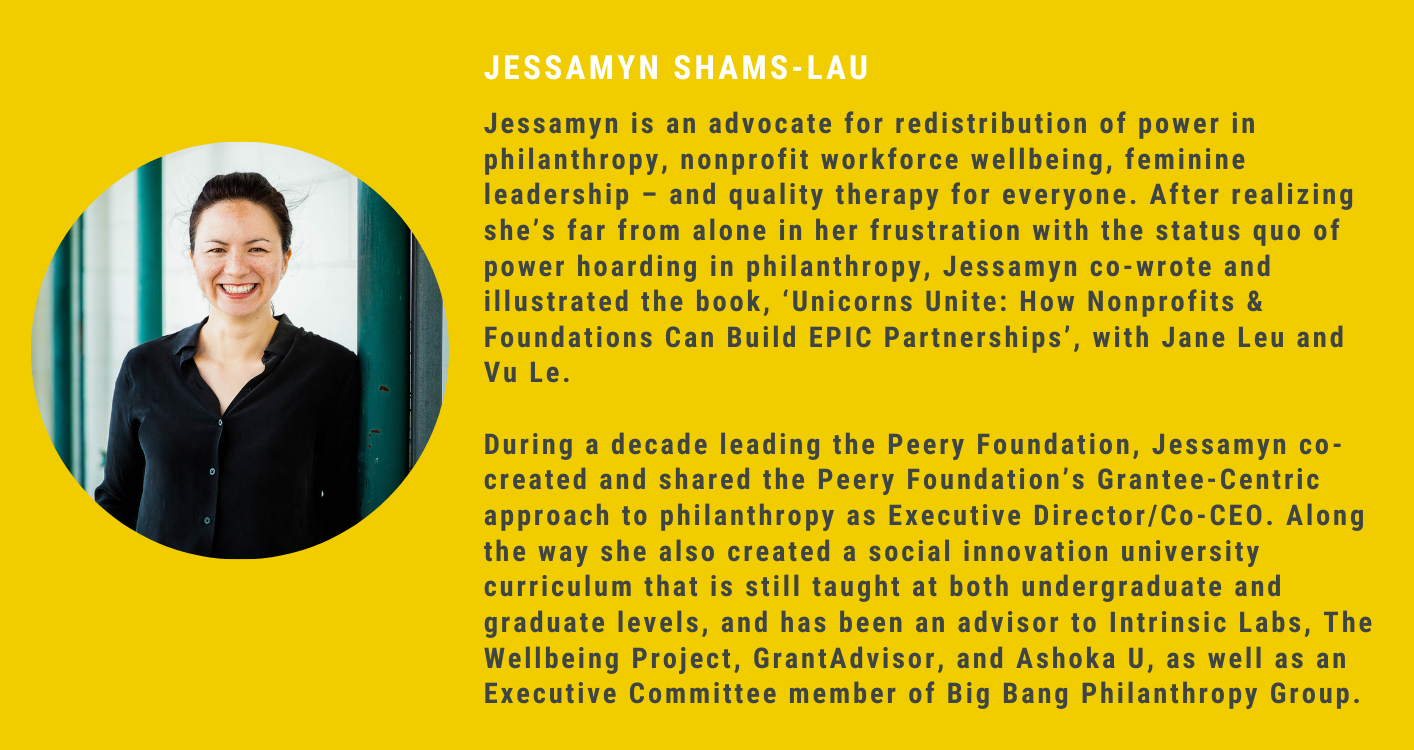Metamorphic Legacy: Creating The Conditions For Transformation
By: Jessamyn Shams-Lau, Senior Lead to the Capital Collaborative by Camelback Ventures; Co-Author ‘Unicorns Unite: How Nonprofits & Foundations Can Build EPIC Partnerships’
Let’s talk about legacy and stewardship. Not the staid legacy of your family name etched on a building plaque or the status quo of stewardship that prioritizes perpetual control. I’m talking about the future of legacy and stewardship. And I’m talking to you folks out there who want a different definition of legacy, who want to set a new standard of stewardship. What do we need legacy and stewardship in the funding world to look like?
As more and more of us recognize our privilege, acknowledge our role in perpetuating systems of inequity, and ask ourselves what role we can play in truly changing the system for the better, there are also those doing so in the funding world who hold the title ‘founder’, ‘donor’, ‘trustee’, or ‘board member’. We know many of these folks are White, wealthy, and fully acknowledge that they are not personally proximate to or professionally trained in the specific issues they seek to address.
I believe that funder board members–those working to educate themselves about systems of oppression that they themselves have scarcely felt the ill effects of–want to be part of a more equitable system. They want to use their positions of influence to repair the harms caused by an unjust system, and play roles in building a just and representative system. But they don’t know how to go about doing this in a way that is appropriate given their intersectional privilege. They don’t want to get it wrong. They don’t know if it’s possible to change the status quo as just one person. But they know that a definition of legacy they can truly be proud of involves letting go of their own power, creating space for a full transformation of governance–a metamorphic legacy.
Metamorphic legacy is a beautiful, wise, intelligent form of stewardship. It knows its unvarnished history, feels the present weight of opportunity, and courageously faces a future they won’t control. It embraces change, complexity, and collective design. It recognizes that qualifications and expertise for philanthropic governance are not determined by proximity to wealth but proximity to community, directly relevant diverse types of knowledge and experience, and multifaceted understanding of the systems that hold problems in place. The scion of metamorphic legacy is distributed power and liberatory forms of governance. It’s a pretty exciting concept.
As you’re reading this, you might be thinking ‘that sounds wonderful but how do I put this into practice?’. Here are three steps to demonstrating metamorphic legacy as a board member or trustee of a funding institution:
Examine your history: How does the source of your wealth and influence intersect with, benefit from, or uphold historical or current oppressions? It’s often helpful to hire someone unconnected to your family, company, or institution to do this deep research with an independent, neutral lens–and the expertise to dig deep and see connections that might not be obvious.
Redefine your role: Your role is the crucial, unique, and challenging work of creating the conditions for transformation–from status quo control to new liberatory forms of governance, power dissemination, and collective stewardship.
Let go of power: Fully and totally relinquish dominion and control. Experience the catharsis of letting go of the expectations and weight of the old ill-designed system. Step back and be proud of the groundbreaking and beautiful metamorphosis you have ushered in. Celebrate what will evolve from afar.
Of course I’m oversimplifying points 2 and 3, both of which are complex tasks both operationally and emotionally. At the Capital Collaborative by Camelback Ventures, we want to help midwife metamorphic legacy. During 2023 we’re designing a space for board members and trustees to come together to work on 2 and 3 (building on the lessons we’ve learned from hosting three Capital Collaborative cohorts of White funder professionals–foundation and investment firm staff–to support and accelerate their desire and commitment to make meaningful change within themselves and their organization's commitment to racial equity). Participants will be in the safety of a peer cohort, have space to redefine their roles, and support to formulate a transition plan for letting go of power.
We’ll begin the conversation at the 2023 Guardian Summit, where we’ll be challenging the investors, grantmakers, and HNWIs in attendance to reimagine and articulate what governance structures could look like for their own organizations if they were designed to center equity, justice, representation, and liberation. We can’t create something we have not first imagined. We think we’re going to hear diverse, creative, and surprising ideas come to light because governance does not have one particular shape or form. It should be bespoke–tailored to the particular people, cause, and solutions involved.
Are you one of those board members that wants to diversify power in philanthropy, or do you work with someone who might fit the bill? We’d love to hear your advice on how to create the perfect space of support, vision, and challenge for board members to imagine and further define metamorphic legacy with us. You can share your thoughts and recommendations here.
This thought leadership piece and others like it can be found in Camelback Ventures' Giving Compass ‘Racial Equity in Philanthropy' e-magazine collection. Check it out!
_________
The Capital Collaborative by Camelback Ventures works with white funders and social impact investors who want to deepen their individual and organizational commitment to racial and gender equity in philanthropy — but may not know how. You can learn more about how to get involved by submitting an interest form for the Capital Collaborative’s 2023 cohort or signing up for the newsletter.


